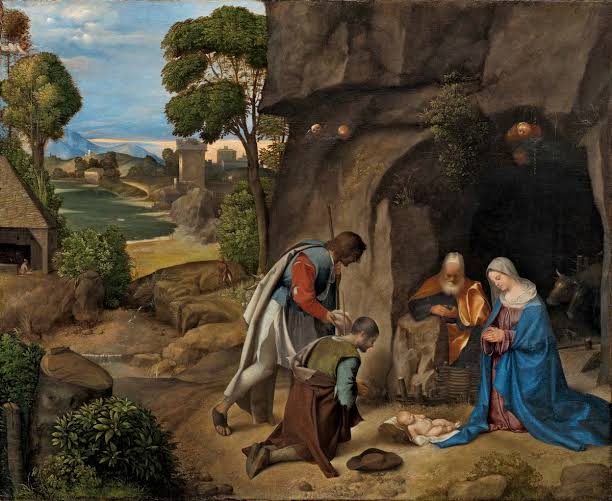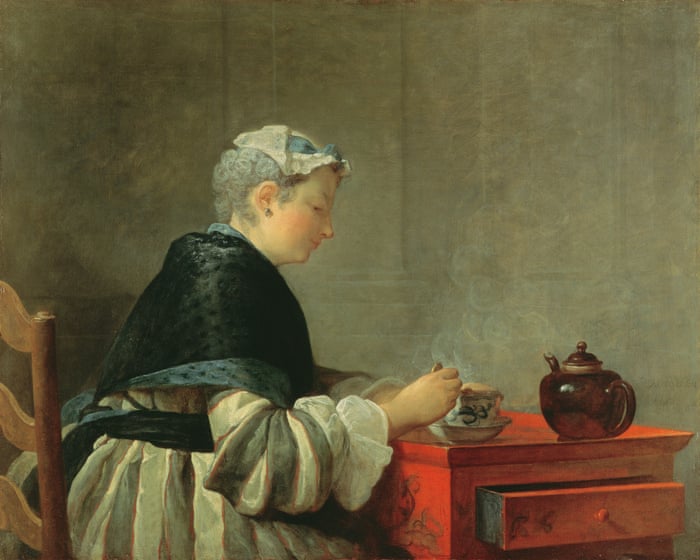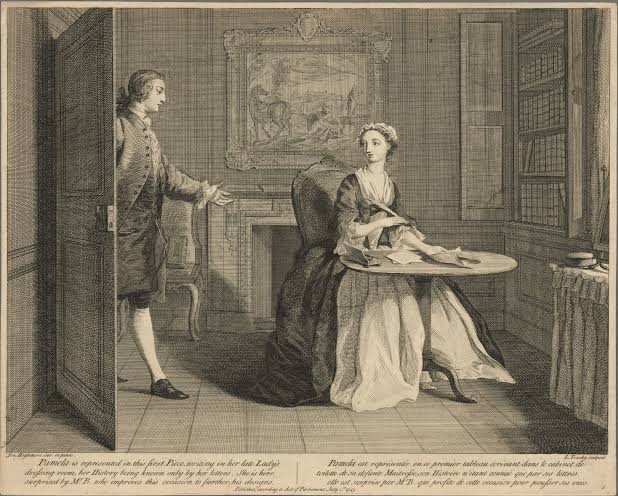Introduction
The evolution of the novel happened over a period of centuries before it took the form we witness today. There have been several landmark contributions to the development of storytelling all over the world. One book, however, which remains ground-breaking in various aspects is Pamela. Written by Samuel Richardson, Pamela is widely regarded as one of the earliest novels in the English language. The author himself was one of the greatest ones in the 18th Century. The novel is also arguably the first novel to introduce Epistolary as a style of fiction writing.

Brief Biography of Samuel Richardson
Samuel Richardson was born on 19th August 1689, in Mackworth, Derbyshire, England. Along with Henry Fielding, Tobias Smollett, and Lawrence Stern, Richardson was of the best authors of the 18th Century. It was an era that revolutionized the art of storytelling and introduced various genres and styles of writing. Richardson was an established printer and publisher and printed almost 500 different works in his lifetime. These include novels, journals, magazines, and more. His notable works, Pamela, Clarissa, and The History of Sir Charles Grandison are the epitome of Epistolary novels.
Richardson got his education at Christ’s Hospital grammar school. However, from an early age, he confessed that he had a penchant for letter writing. In fact, Richardson himself admitted that helping people in his community write letters of correspondence for various purposes was one of his most favourite things to do.
Unlike his contemporaries, Richardson did not belong to the higher class of clergy or nobles. Instead, he came from the working class, and this was quite apparent in his writing. He was aware of the social evils present in society, like class discrimination, and the exploitation of the underprivileged at the hands of those belonging to the upper class. In his novels, Richardson tries to depict the problems and usually provides solutions to them, an approach that was quite unique during the period.
Samuel Richardson passed away on 04th July 1761, in London, England.
What is an Epistolary Novel?
Epistolary literally means ‘in the form of letters’, which is exactly what a novel of this style is. It is a novel written in the form of letters, written from the perspective of one person, or multiple persons. As per the Encyclopaedia Britannica,
“Epistolary novel, a novel told through the medium of letters written by one or more of the characters. Originating with Samuel Richardson’s Pamela; or, Virtue Rewarded (1740), the story of a servant girl’s victorious struggle against her master’s attempts to seduce her, it was one of the earliest forms of the novel to be developed and remained one of the most popular up to the 19th century. The epistolary novel’s reliance on subjective points of view makes it the forerunner of the modern psychological novel.”
(Encyclopedia Britannica)
An epistolary novel is one of the most effective styles in creating deep characters. Letters let the author portray first-hand feelings of a person. This helps the readers to understand the emotional state of the character and the reason behind suffering or happiness. The work of the 20th Century, “The Diary of a Young Girl”, by Anne Frank, is epistolary stylistically.
Other famous works besides Richardson’s Pamela include:
Fanny Hill by John Cleland (1748)
Poor Folk by Fyodor Dostoyevsky (1846)
Dracula by Bram Stoker (1897)
The History of Eliza Wharton by Hannah Webster Foster (1797)
Clarissa by Samuel Richardson (1749)
Summary of Pamela

Phase I
“Pamela” is a story of a girl, who works as a housemaid for an upper-class woman in a city away from her village. After the death of her mistress M, Pamela becomes the servant of her son, a knight, who has evil intentions. He tries to seduce her, and when she refuses, he also tries to molest her. Somehow, Pamela is successful every time to safeguard her modesty. Frustrated, the knight creates problems for Pamela. He sends her off to a town unknown to Pamela, where she is subjected to severe hardships.
Life turns bad to worse, as her new mistress in this town begins to physically abuse her for small things. Pamela’s condition deteriorates by the day. The knight visits the town and again tries to molest her, and she again successfully protects herself. In the meantime, Pamela comes in contact with a certain man in the new town and develops a friendly relationship with him. Upon learning her condition, this man tries to help Pamela. However, given the high social position of the knight, he couldn’t do, anything except let her gain sympathy from the elders of the town.

On his subsequent visit, the knight again tries to molest her, and yet, remains unsuccessful. However, this time Pamela’s resistance has a strong impact on him and begins to feel guilty for the sins he committed. The knight falls in love with her but is hesitant to marry her, as she belongs to a lower class. This is the first time when Pamela considers his feelings towards him, though for a very brief period of time. Pamela crosses paths with a fortune teller, who predicts that the knight will take her in a fake marriage, and would then abandon her after fulfilling his desires.
Phase II
Pamela’s new mistress gets hold of a letter, in which the unfortunate girl had written about the fortune teller’s prediction, and hands it over to the knight. This time, out of rage and anger, the knight orders Pamela to leave forever. He tells her to go back to her parent’s village, and Pamela heaved a sigh of relief. Interestingly, on her journey back home, she receives a letter from the knight. He mentions that he realizes his mistakes and wants to marry her as he is deeply in love with her. She then receives a second letter upon reaching her village, in which the knight requests her to come back, as he has fallen sick and needs her.
Pamela decides to return back and reunites with the knight. He apologizes for his misconduct and offers her marriage. She informs him about the fortune teller’s prediction, but he assures her that his feelings are genuine, which turns out to be true. However, before getting married, the knight teaches Pamela a number of etiquettes to make her seem from the upper class. Finally, the knight and Pamela get married, in a low-profile ceremony inside a small countryside church.

After her marriage, though the knight remains loving and caring, his sister is rude and disrespectful towards her. She threatens her, insults her, and even tries to physically abuse her. The sister doesn’t like the fact that her brother married a lower-class woman, and therefore, wants them to separate. For this very reason, she informs Pamela about the knight’s affair with a woman in the past from whom he has a daughter.

Pamela, instead of getting upset, calms her husband who is furious with his sister, and this startles the sister too. She realizes her mistakes and apologizes sincerely. The story ends with Pamela and the knight travel to where his estranged daughter lives and meets her.
Analyzing Pamela as an Epistolary Novel
The novel comprises seven volumes of letters of conversations Pamela has with her parents and others. This makes Pamela a purely epistolary novel, and in fact, it is the first original English novel belonging to this type of writing. In her initial letters written to her parents, she describes her state working for the mistress, the knight’s mother, and describes that she is quite happy. When the mistress passes away, Pamela shows her concerns in the subsequent letters, as she would have to go back to her parent’s village and live life in poverty again. When the knight informs the servants that he won’t terminate any of them, she expresses her joy and relief.
Progressively Intense

As the story progresses, her letters become more and more intense. With each letter, one comes to know more and more about the characters, especially Pamela. Her feelings, her dilemma, her desire for a financially stable life, her determination to protect her modesty, etc., all her feelings grip the reader, and being letters it come straight out of the horse’s mouth.
The novel also shows multiple conversations Pamela has, like with her parents, and with the man in the unknown town. In fact, with the latter, Pamela exchanged letters by hiding them in sunflower fields, as the meeting wasn’t a possibility. Each conversation gives an insight into her character from a different perspective, which is essentially an important characteristic of an epistolary novel.
Even when Pamela suffers through her worst times in the unknown town, she continues to write letters to her parents, though they never reach them. Somewhere deep inside, by the end of the novel, one realizes the hidden desire she had for the knight, and the only thing that kept her from submitting to his demands was her wish to become a wife rather than a mistress. Subtly hidden throughout the letters, her desire to break from the lower class, and rise up to the higher ones was always there, though not intentionally.
The length of the text is too large, and the premise of the story is too common and predictable. However, that’s my analysis from a 21st Century perspective. Back in the day, Pamela was ground-breaking stylistically. It paved the way for a number of epistolary novels that followed, and continue to do so even today.
Conclusion
Pamela is not a perfect novel for various reasons. For one, it’s too big to keep the reader engaged. Secondly, the story is too plain. However, in being the first English novel and the first epistolary novel originally written in English, the novel succeeds with flying colours. It has every characteristic of an epistolary and portrays each one sufficiently. With strong characterization, deep conversations, a portrayal of strong emotions, and hidden intentions sprinkled throughout, Pamela is a book that suitably sits among the classics of the early days of the English novel.
What it did, is open the door for future authors to present their masterpieces, and enrich the English literature. The Dracula by Bram Stoker is a cult classic, which was published over 150 years after Pamela. Likewise, Jane Austen’s juvenile novel “Lady Susan”, and her magnum opus, “Pride and Prejudice”, take inspiration from the epistolary style of the novel.
Therefore, one should analyse Pamela as a stylistic text which created a new direction, rather than for its content and story-line.

Noman Shaikh is the co-founder and editor-in-chief of Bombay Reads. He grew up in Mumbai, a city he loves more than any other, and currently works as a content consultant. His expertise lies in creating high-quality academic and marketing content in the form of blogs, articles, op-eds, etc. Noman has worked with reputed brands, including Economic Times (through Spiral Media), Coinbase (through MattsenKumar), AdEngage, Della Group, GBIM Technologies, VAP Group, etc. For his published portfolio, click here. Contact Noman on noman@bombayreads for engagement.


I really love and appreciate your smooth and simple use of language. Being a student of English Literature myself, I have thoroughly enjoyed reading your article. It was very beneficial on my part. Keep up the good work.
Regards.
Thanks for the appreciation. Do check out other blogs as well!
Down to earth language has been used by the author to explain the first epistolary novel that makes it easily understandable. Commendable.
Warm Regards.
Prabodha Pradhan
P .G., 2nd Semester.
Department of English and Cultural Studies,
Kolhan University, Chaibasa
Jharkhand
Thank you, Prabodha.